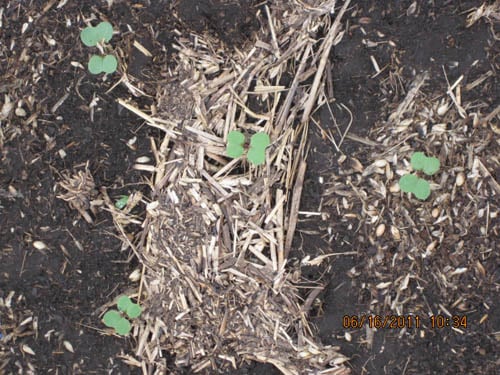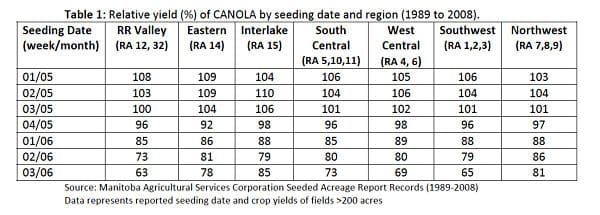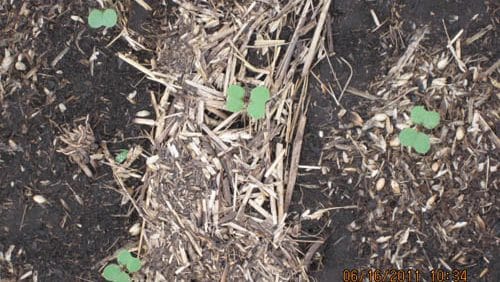
Growers hoping to seed their final canola acres this week or next week may want to consider the following tips to deal with a shortened growing season.
Start with a look at the average date of first fall frost. This will tell you how much growing season you have left — on average. Click your province for a map showing average dates for first fall frost: Alberta Saskatchewan Manitoba. (Click here for frost probabilities for each station on Alberta’s AgroClimatic Information Service (ACIS) website.) Most fall frosts occur within two weeks either side of the average date for your area. For example, if the first fall frost is between August 31 and September 6, on average, then a variety with 100 days to maturity should be seeded this week to be on the lower risk side for fall frost damage.
Choose an earlier-maturing variety. Switching from a long-season B. napus (Argentine) to an early-season B. napus can gain a week. Switching to a B. rapa (Polish) variety can gain two weeks, but this has its downsides. B. rapa canola has lower yield potential to start with and B. rapa varieties do not offer herbicide tolerance, which can make volunteer management difficult — especially with tight rotations. A canola field with young B. rapa plants and larger volunteer B. napus coming through will have much different maturities, and will present challenges all season for disease management and harvest. Using the Canola Performance Trials online tool, you can search by “days to maturity” as well as yield.
Seed shallow. This is always a good idea, but especially this time of year. Canola seeded half an inch deep can emerge 3 or 4 days earlier than canola seeded deeper.
Increase the seeding rate. A higher rate means a more dense stand, which means less branching and overall earlier maturity. This can gain a day or 2.
Use seed-placed phosphate fertilizer. Pop-up phosphate fertilizer applied with the seed can gain a day or 2, but this effect will be diminished by warmer soil temperatures and higher soil P levels.
Reduce nitrogen rates. Lower nitrogen availability means the crop will not be vegetative for as long, which means the crop will mature a day or 2 earlier.
Finally, consider the profit potential of other crops. Yield potential for all crops drops with late seeding. Will a lower yielding canola crop provide a better return than a lower yielding wheat or barley crop? Take time to pencil out the economics. The following table from Manitoba crop insurance data shows yield potential of canola for each week through May and up to the third week of June.

Here are more tips for growers seeding canola in June:
—Broadcast seeding tips
—When is too late to seeding canola?
